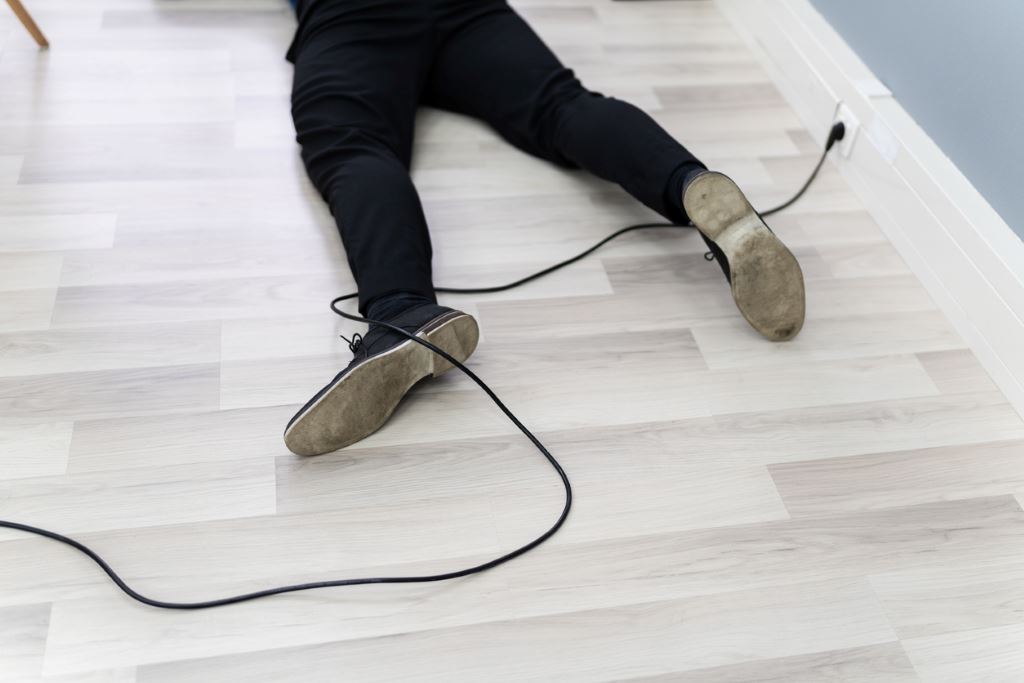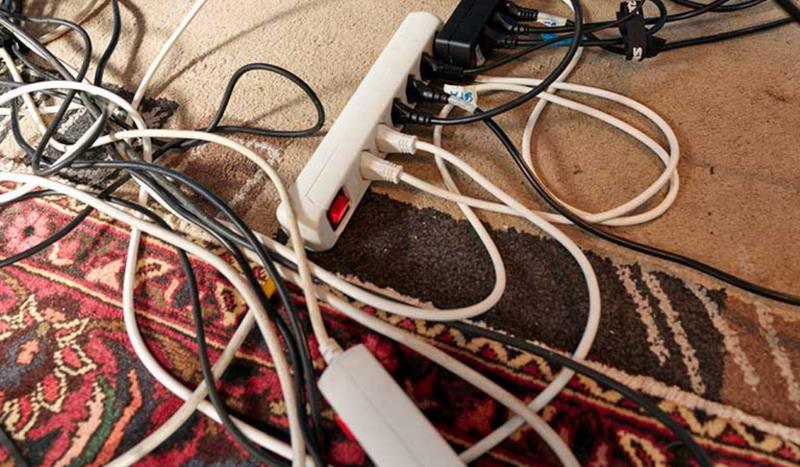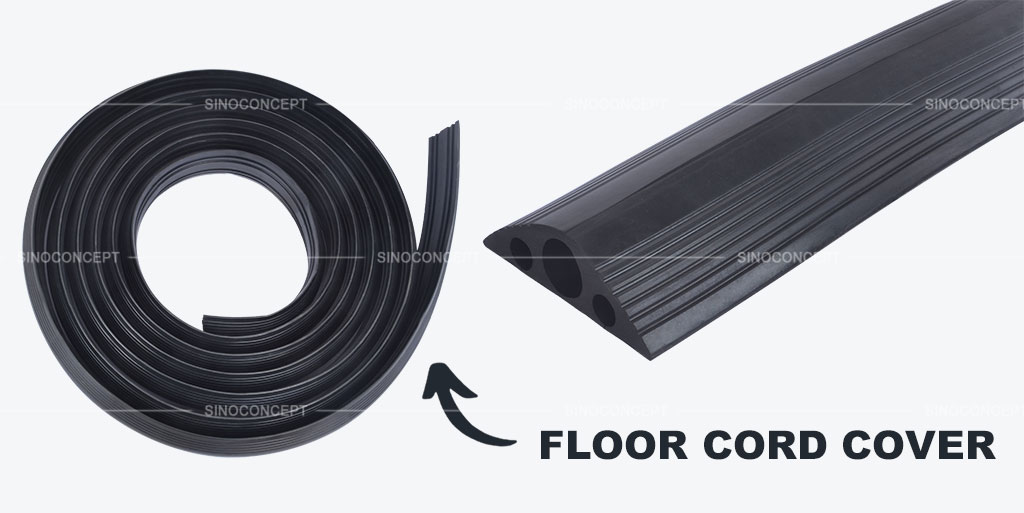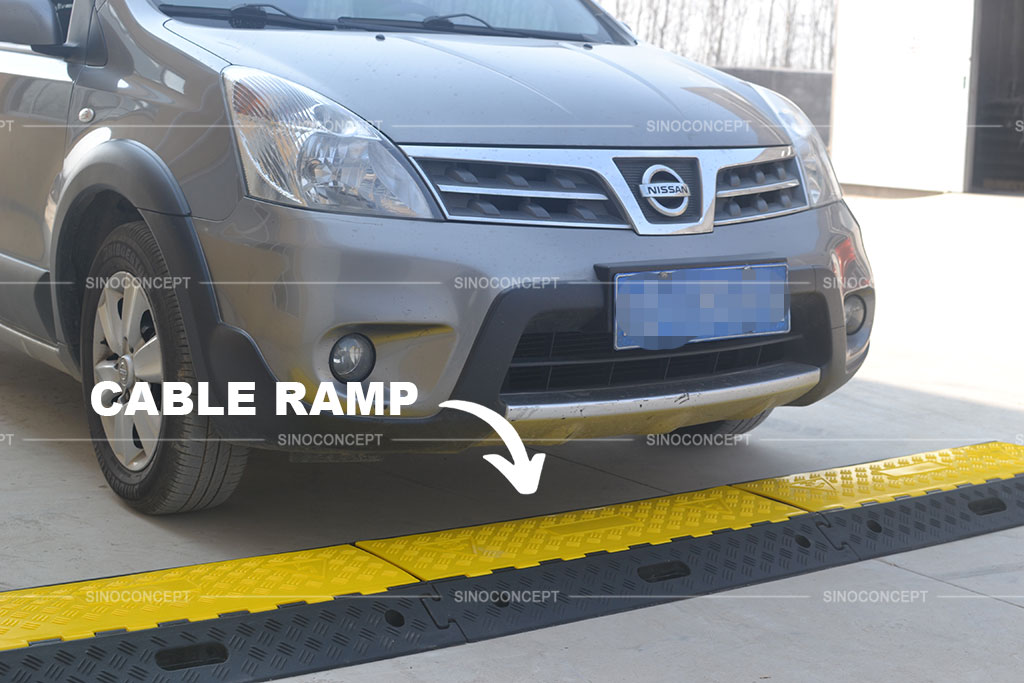How to prevent cable-related dangers
Electricity brightens the world but is also a major cause of electrical accidents. For example, electricity is important to light bulbs, but the same current will zap you if you replace the bulb without turning it off.
This is a cliché example, but there are similar endless possibilities for electricity to pose electrical hazards. Like electricity, cables, wires, and cords are also essential because they are responsible for flowing the current.
However, these cables can cause serious injuries by igniting electrical fires. Wondering about the possible cable-related dangers and how can you prevent them?
Do you want to know more about this topic? We also have an article talking about facts about floor cable management.

What are cable-related dangers?
Look around you; you’re typically surrounded by wires. Turn to your right side to find your data cables, extension cords, and wires. Such increasing use of wires increases the risks of electrical fires.
Following are signs which can erupt shocking incidents near your surroundings:
- Faulty wires and loose cables
- Overloading circuits
- Water spills
- Tripping
If the wires are loose and faulty, they run a huge risk of causing electrical shocks. You must remove and replace them as soon as you get time because they are dangerous for you and your family.
Furthermore, loose cables have no insulation and aren’t protected. Therefore, loose cables are exposed and are easily combustible, leading to electrical fires.
Similarly, if you overload your extension cords and accumulate all your plugs near a single electrical outlet, the wires are at risk of burning because of overload.
Moving on, wires and water don’t go hand in hand. Therefore, protect your wires and avoid spilling water on them. Even if you do so, unplug the electrical appliances and get them checked by a licensed electrician.
Another common cable-related danger occurs due to accumulating many cables and wires in a single place. This can compromise worker safety in the workplace because of a tripping hazard. Workers or even household members may trip without seeing these cable bundles.

Who can be affected by cable-related dangers?
Cable-related dangers threaten any population segment. Whether you’re in your workplace or home, there will always be hazardous safety issues.
Following are the people who can suffer the most from cable-related dangers:
- Children/pets: Your toddler is at the highest risk of experiencing an electrical hazard. Kids have this tendency to put everything they see in their mouths. Therefore, they may take an exposed faulty wire that can cause a power surge and possibly burn your kid. Similarly, pets can experience similar repercussions because some pets, like cats, like the wire covers.
- Employers: They are at the highest risk of experiencing workplace physical hazards. Around 29% of corporate injuries occur due to tripping, and these wires are their underlying cause. This risk can increase in IT workstations with a lot of wiring due to computers, ethernet cables, generators, and wall-mounted TV cables.
- Guests: If you have a guest in your house, they are likely unaware of any electrical safety issues. Therefore, if they unknowingly touch a faulty loose cable or switch on a loose plug, they can experience painful consequences.
- Pedestrians: They can also be at risk. Consider the overhead power lines, which have a high volume of current flowing. While they may appear harmless, they can cause electrical sparks due to harmful surges. If someone is in range during these sparks, they can suffer terrible injuries, even electrocution.

What are the measures to prevent cable-related dangers?
Every danger ultimately has prevention, and so do cable dangers. There is a multitude of ways in which you can avoid them.
Some of the prominent solutions include:
- Floor cord covers/sidewinder cable protectors
- Low overloading
- Underground protection
- Floor boxes

You have already read a good part of this article, 👀
We've
got the impression that you like it. 🙂
👇🏻
IF YOU ARE LOOKING TO WORK DIRECTLY WITH A MANUFACTURER,
FEEL FREE TO CONTACT US. WE ARE VERY HAPPY TO HELP!
Floor cord covers are cable management devices that are found everywhere. They are a suitable method to cover wires and cables in your home.
You can even install them yourself, and since they are self-adhesive, you can cut them with knives to your desired length. Floor cord covers will hide all the cables, reducing the chances of tripping, insulation damage, and water spillage hazards.
Similarly, a sidewinder cable protector is similar to a cord cover but has an articulating design and can fit any room’s layout. You can also connect as many segments as possible to increase the size.
Avoid overloading your cables because they will reduce the connectivity signals and damage cable insulation. The best way is to use cable ties to keep them organized and tidy.
Similarly, there has been an increasing trend of underground cabling. However, there can be an electrical circuit or breakers; mishandling them exposes you to electrocution risks.
Therefore, to configure underground cables, you must be careful, use personal protective equipment, and choose a qualified electrician. Using cable-locating devices to identify the cabling structure before excavating is essential.
Floor boxes are another low-profile cable management solution that eliminates tripping risks. These boxes completely shift all the room wiring underground in floor boxes. These boxes also allow us to reconfigure and sort an electrical problem easily.

Preventing cable dangers in industries
These cable dangers have become even more prevalent in the chemical and engineering industries. They have heavy machinery in workplaces which requires a lot of cables. These cables are important investments, and it’s important to protect them.
While protecting them is essential, they also are a major cause of chemical hazards and are an underlying concern for workplace health. Following are several ways to reduce them:
- Cable ramps
- Hose and floor cable covers
- Safety programs
Cable ramps/cable guards are cabling solutions that completely hide your cables and avoid tripping or cable damage. They have a hinged cover that conceals all your wires.
Plus, they are so strong that they can even withstand the weight of a forklift. Therefore, they are a great cable protector, especially in the construction industry.
Hose and floor cable covers are another flexible way to protect hoses and cables. Velcro or nylon connectors can extend the cable covers to your desired length. Your wires and cables will be organized and safe if you install floor cable covers.
Therefore, there will be no risks of loose or faulty cables, and it will avoid tripping in the workplace.
Another useful way is to conduct training sessions on workplace violence and occupational safety and health.
This way, you can guide your employees about the major risks and the protocols they must follow. Teach them about safety issues and electrical safety tips in your organization. These useful sessions will help them prevent any electrical hazards.

Conclusion
Cable-related dangers can be fatal. Therefore, avoiding them in the first place is the best strategy. The best way to avoid them is by using precautions and installing cable protectors that conceal these cables and increase the distance between humans and cables.
Do you want to protect your family and yourself from these fatal electricity hazards? Or do you want to see any of your employees suffer from an electrical shock? Of course, you must want to avoid these painful dangers.
You can get the best cable protector solutions at Sino Concept to minimise life-taking risks. Visit our website to explore our offerings.
👇🏻
IF YOU ARE LOOKING TO WORK DIRECTLY WITH A MANUFACTURER,
FEEL FREE TO CONTACT US. WE ARE VERY HAPPY TO HELP!





















